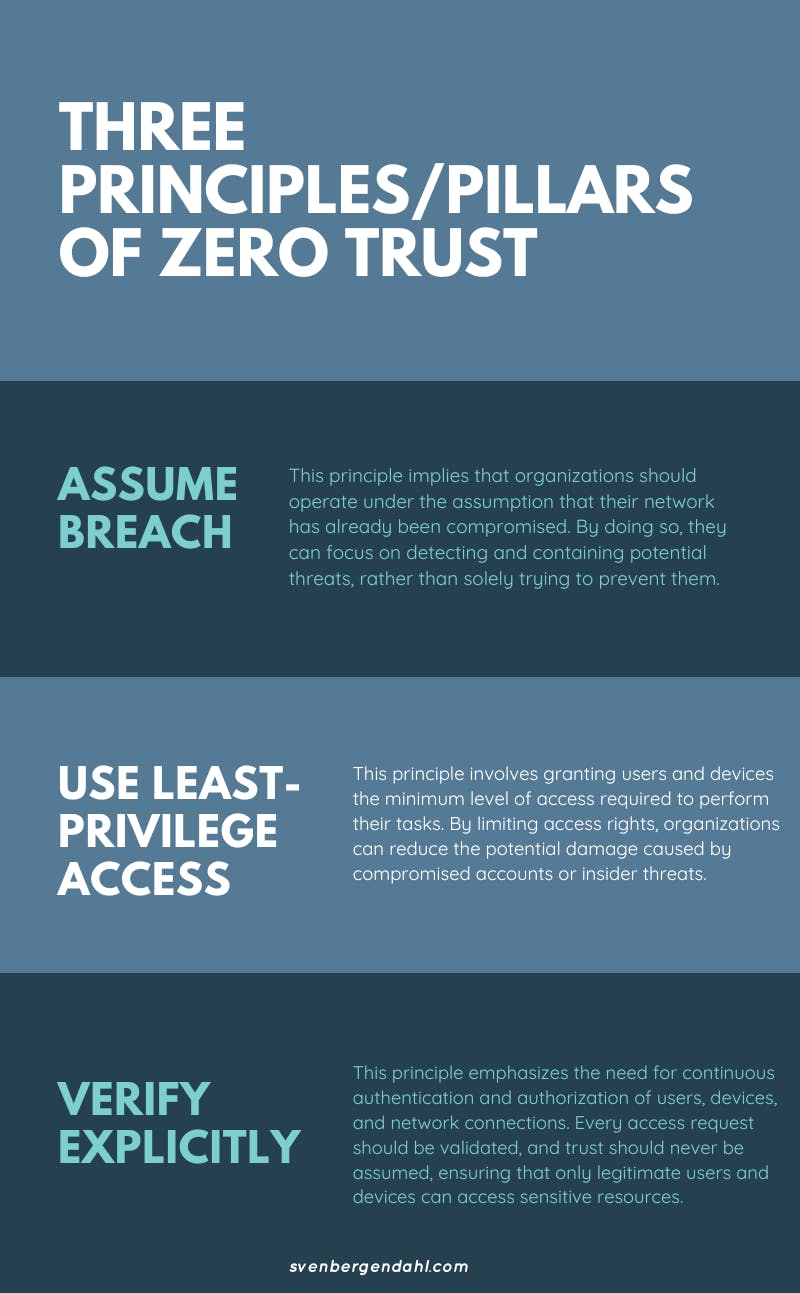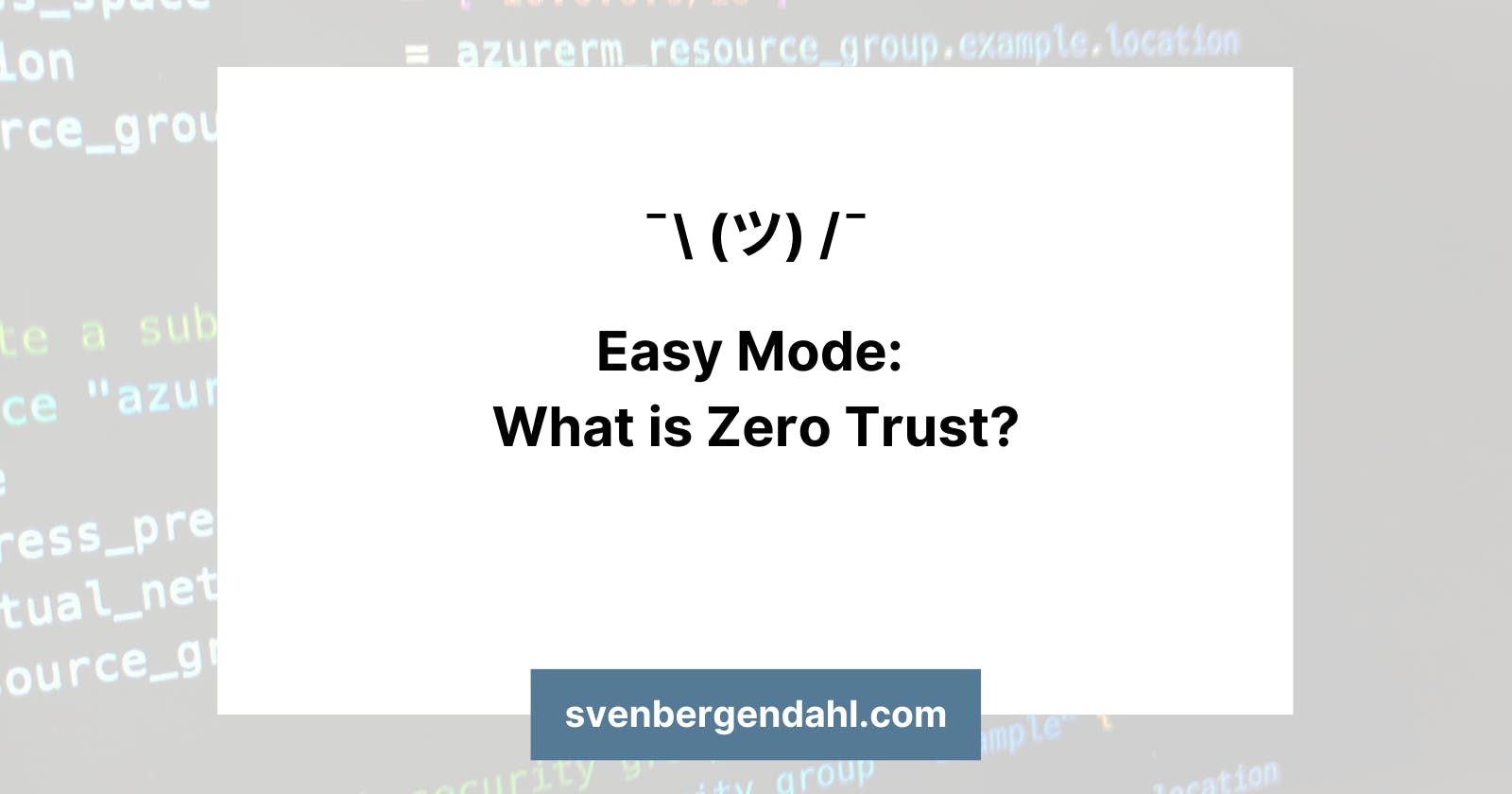Hey there! Welcome to the first blog of my "Easy Mode" series, where I break down complex topics into bite-sized, easy-to-understand posts. Today, we're going to dive into a cybersecurity concept called Zero Trust. Imagine a world where you question everything and trust nothing - that's the essence of Zero Trust. This security strategy is all about assuming that no user, device, or network is trustworthy by default. It's like a virtual security guard, constantly checking and double-checking everyone's actions. In this blog post, we'll explore the key principles of Zero Trust, discuss why it's so important, and even take a look at how Microsoft Azure puts it into practice.
Overview of the Zero Trust Concept
The Zero Trust concept was founded by John Kindervag as a response to the growing complexity of modern cyber threats and the limitations of traditional security models. In the past, organizations often relied on perimeter-based security, where everything inside the network (user, devices,...) are considered trustworthy, while external entities were treated with suspicion. This approach has proven to be lacking in the face of new attack methods and the increased use of cloud services, remote working, and mobile devices.
What is a perimeter-based security approach?
Zero Trust is a paradigm shift in cybersecurity that abandons the idea of a secure network perimeter. Instead, it focuses on securing individual internal resources, regardless of their location or which user accessing them. By treating every access request as potentially malicious, Zero Trust provides a more robust and dynamic security posture that adapts to the threat landscape.
At the heart of Zero Trust is the belief that trust must be continually earned and verified, rather than assumed. This approach aims to minimize the potential damage caused by breaches, compromised credentials, or insider threats by requiring consistent verification of users, devices, and network connections before granting access to resources.
The Zero Trust Philosophy
The core philosophy behind Zero Trust is "never trust, always verify." This mindset fundamentally changes the way we approach security by emphasizing the need for constant validation and verification, rather than assuming that everything within an organization's network is safe.
Key Principles/Pillars of Zero Trust

Why Embracing Zero Trust Matters
In today's digital landscape, cyber threats are constantly evolving, making the adoption of the Zero Trust approach essential for organizations seeking to safeguard their digital assets effectively. Here are some key reasons why embracing Zero Trust is crucial:
Staying Agile: Zero Trust is designed to be flexible, allowing organizations to adapt to the ever-changing threat landscape. Through continuous verification and validation of access requests, businesses can stay ahead of new and emerging threats, maintaining a strong security posture.
Protecting Sensitive Data: With the increasing reliance on cloud storage and processing, data security has become even more critical. Zero Trust helps protect sensitive information by regulating access and reducing the risk of unauthorized exposure or alteration.
Meeting Compliance Requirements: As industries and governments implement stricter data protection and privacy regulations, adopting a Zero Trust approach can assist organizations in meeting these standards by demonstrating a proactive approach to securing their data and systems.
Mitigating Insider Threats: Zero Trust helps minimize the risks associated with malicious or negligent insiders by continuously verifying user identities and granting access only when necessary, based on the least-privilege principle.
Gaining Visibility and Control: The Zero Trust model prioritizes ongoing monitoring, offering organizations greater insight into their networks and systems. This heightened visibility allows for quick identification and response to potential threats, as well as better control over the security environment.
By incorporating Zero Trust into their security strategy, organizations can establish a more resilient and robust infrastructure, effectively protecting their valuable digital assets and maintaining the trust of their customers and partners.
Example of Zero Trust with Azure AD
An example of the Zero Trust implementation in Azure is the Azure Active Directory (Azure AD), which is a cloud-based identity and access management service.
Verify explicitly: Azure AD uses multi-factor authentication (MFA) to confirm users' identities before granting access to resources. MFA requires users to provide at least two forms of verification, such as a password and a one-time code received on a mobile device or the Microsoft Authenticator App, ensuring that only legitimate users can access resources.
Use least-privilege access: In the Azure Active Directory, administrators assign role-based access control (RBAC) to users and groups, ensuring that they have the minimum level of permissions required to perform their tasks like creating a Virtual Machine or change Virtual Network Settings.
Assume breach: Azure AD continuously monitors user behavior and access patterns to detect and respond to potential threats. For example, it uses machine learning algorithms to identify suspicious login attempts, triggering MFA or blocking access when an anomaly is detected. I've already written about this in my blog post Secure your Azure AD User Accounts with Azure Identity Protection
As we wrap up our exploration of Zero Trust, it's clear that this cybersecurity approach is a game-changer. By adopting the "never trust, always verify" mindset and putting the key principles into action, organizations can better protect their digital assets in an ever-evolving threat landscape. Microsoft Azure's implementation of Zero Trust is just one example of how this approach can make a real difference in the security of cloud-based services.

